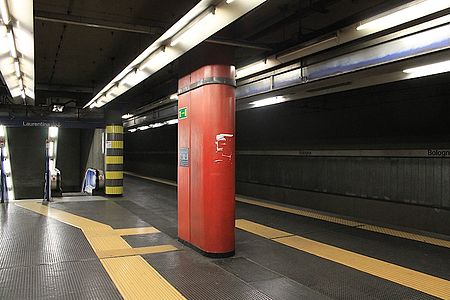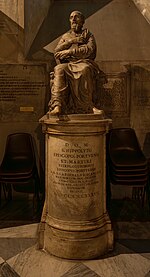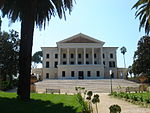Bologna (Rome Metro)
1990 establishments in ItalyItalian rapid transit stubsRailway stations in Italy opened in the 20th centuryRailway stations opened in 1990Rome Metro Line B stations ... and 1 more
Rome Q. V Nomentano

Bologna is a station on Line B of the Rome Metro. It is an underground station located under Piazza Bologna (at the intersection of Viale XXI Aprile, Via Livorno, Via Michele di Lando, Via Lorenzo il Magnifico, Viale delle Province, Via Sambucuccio d'Alando, Via Ravenna). It was opened on 8 December 1990. Its atrium houses mosaics from the Artemetro Roma prize, by Giuseppe Uncini and Vittorio Matino (Italy), Karl Gerstner (Switzerland) and Ulrich Erben (Germany). It was involved in the October 2005 building works for line B1, a branch line off line B.
Excerpt from the Wikipedia article Bologna (Rome Metro) (License: CC BY-SA 3.0, Authors, Images).Bologna (Rome Metro)
Piazza Bologna, Rome Nomentano
Geographical coordinates (GPS) Address Nearby Places Show on map
Geographical coordinates (GPS)
| Latitude | Longitude |
|---|---|
| N 41.913333333333 ° | E 12.520555555556 ° |
Address
Piazza Bologna
Piazza Bologna
00162 Rome, Nomentano
Lazio, Italy
Open on Google Maps








